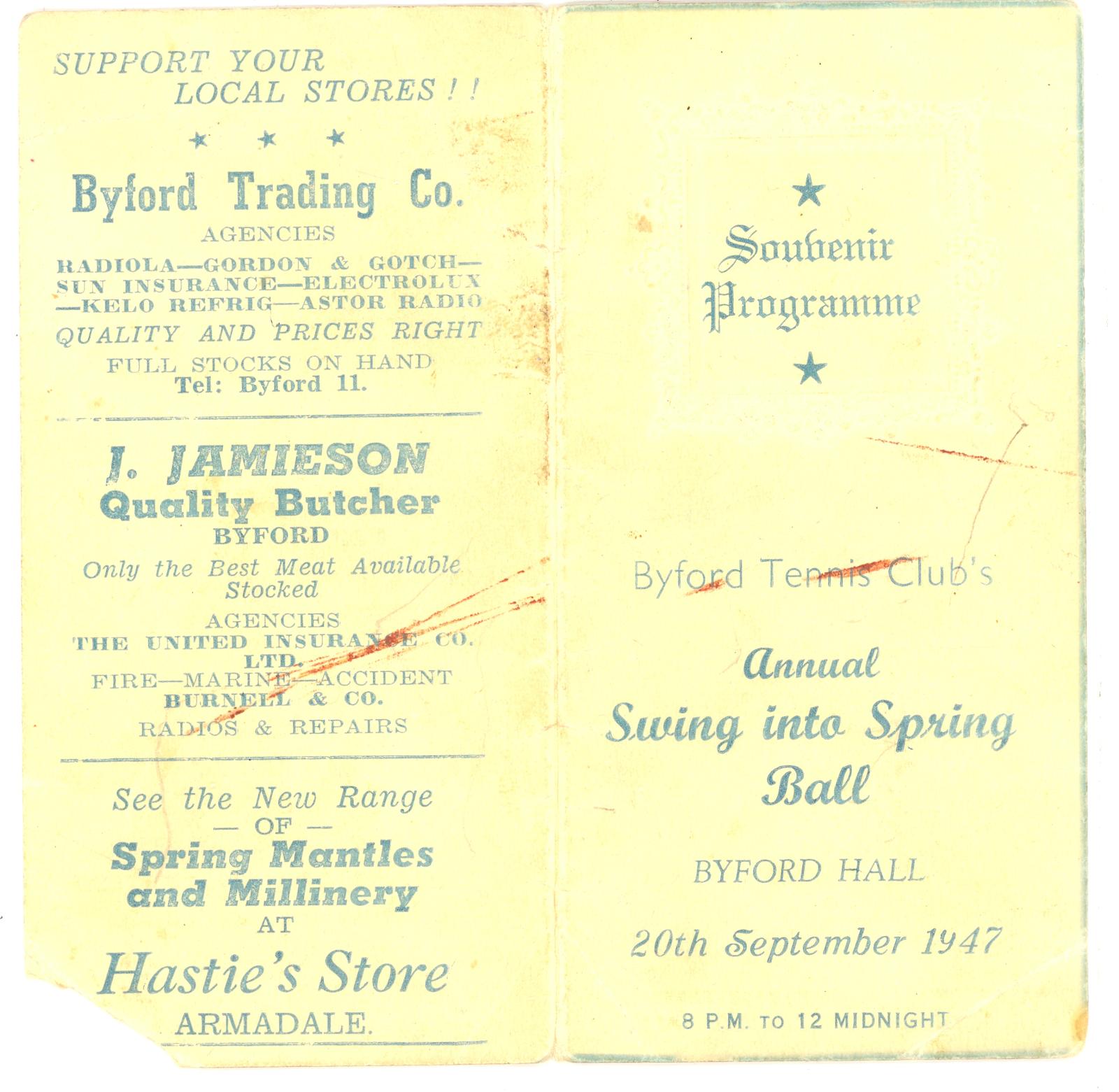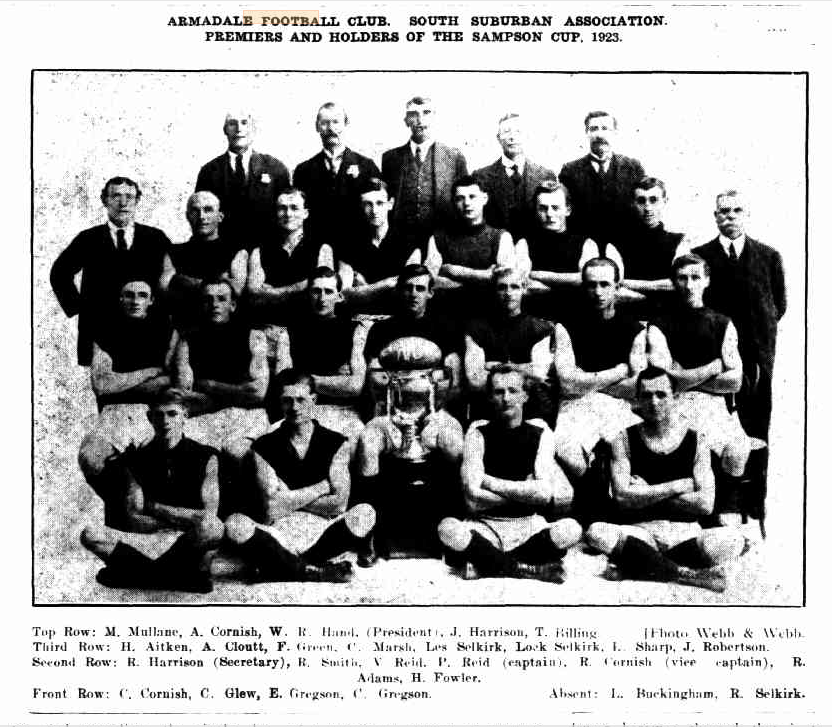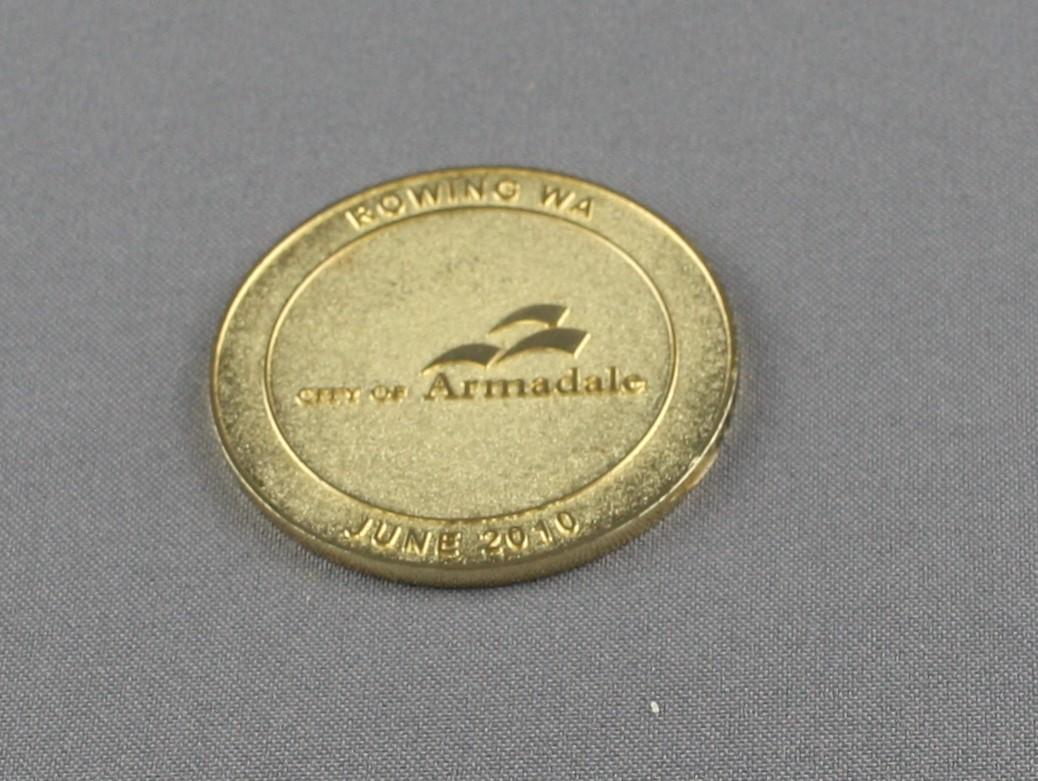How sport has evolved in the City of Armadale
City of Armadale - History House
Local Sporting Clubs play an important role in strengthening bonds within a community. They provide opportunities for a bit of exercise, a chance to connect with others, and help a lucky few develop the skills to turn their passion into a career.
In the City of Armadale over 8,000 people are registered participants in a local sporting club. This does not include the thousands of people who help run the clubs, clean the uniforms, staff the canteen, provide coaching, or umpire games.
This is the story of how the communities that call the City of Armadale home have evolved and changed the local sporting landscape.
Noongar Games
Before the arrival of the Swan Colonists in 1829, Noongar families played a variety of games and sports. Some of the games taught skills needed to survive, others were part of the complex relationships between the different family groups. All, though, were designed to strengthen the Noongar community.
Traditional Noongar games included, memory games, wrestling, tree climbing, and a game where blunted spears were thrown at opponents who had to block or dodge the spear. Team games included meetcha boma, where sticks were used to strike red gum nuts into a goal. Noongar girls played wana, where one girl used her digging stick to defend a short stick stuck in the ground against thrown sticks, stones, nuts, or grass balls.
A sporting community is born
The first British colonists arrived in the district in 1830, establishing the settlement of Kelmscott. For the next forty years the settlement was sparsely populated with little time for leisure activities. By the 1870s the Kelmscott community had grown and felt a sense of permanency. A church was built to cater to the spiritual needs, there was a nearby hotel where you could gather for a drink, and in 1882 the district’s first school was started.
The discovery of gold in 1885 saw a rush of people arrive in Western Australia. While some went seeking gold, others came looking for land to establish farms and orchards. The new railway to Bunbury, which opened in 1893, saw trains stop at Kelmscott, and the district experienced a small population boom.
With the influx of people, many from the eastern colonies, came a desire to play popular British sports including cricket, tennis, bowls, rugby, association football (soccer), rifle shooting and golf. The first locally recorded sporting match was a game of cricket played at Kelmscott in December 1889. The eastern migrants also brought the new game of Australian Rules football which quickly caught on across Western Australia.
One of the challenges local clubs faced was opposition to sport being played on a Sunday, the only day many had off. Restrictions on using the Road Board owned recreation grounds for sport lasted through to the early 1930s. In 1925 a local referendum was held to change the bylaw prohibiting games being played on a Sunday; it lost by 115 votes to 52 thanks to a strong campaign from local churches.
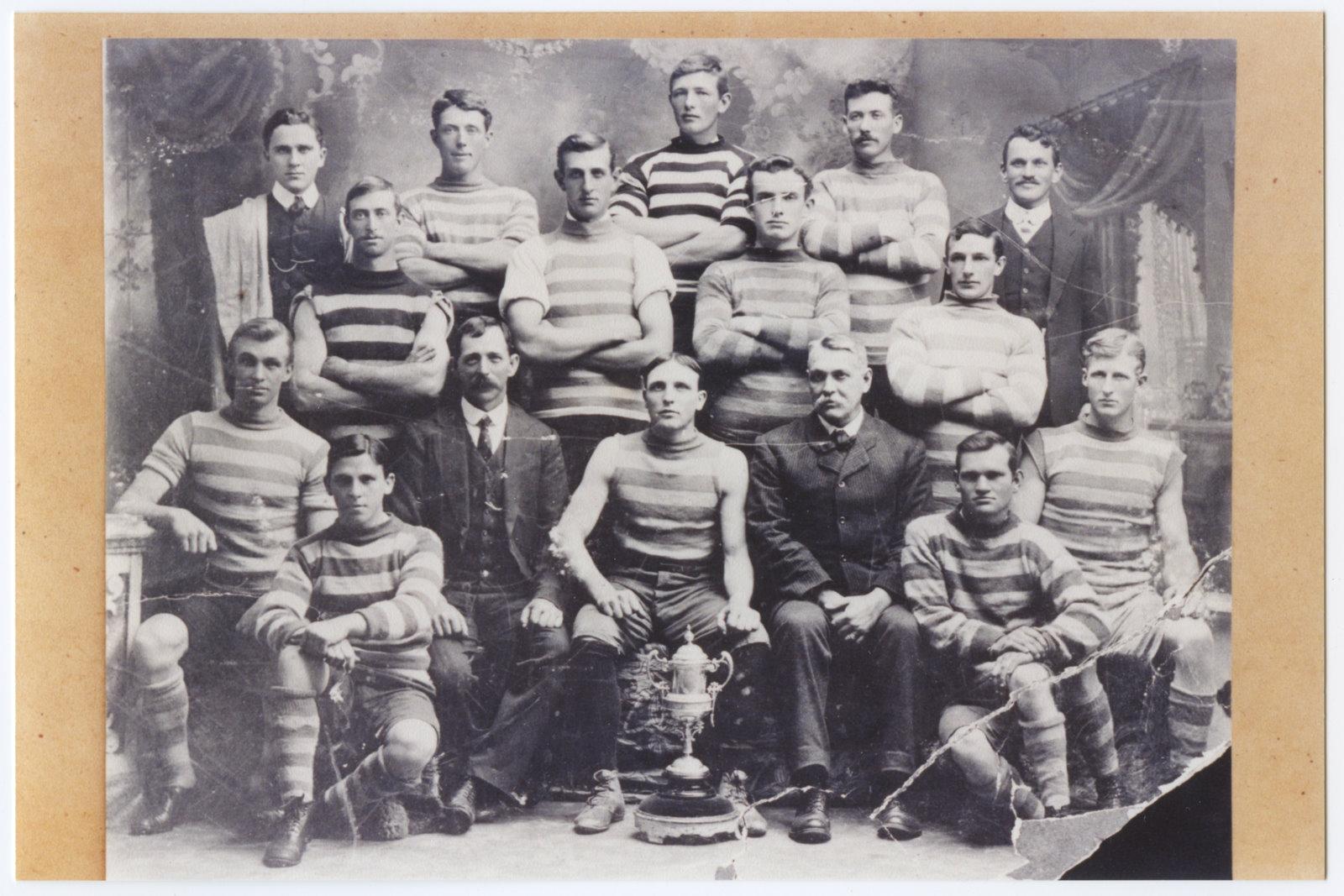
Kelmscott Football Club with the 1912 South Suburban Premiership trophy.
Kelmscott defeated Armadale at their home ground on River Road, 9 goals 11 behinds to 7 goals 10 behinds.
The Kelmscott Football Club was formed in 1898, making it one of the oldest continuous sporting clubs in the City of Armadale. Today the club fields a senior, reserves, and junior men’s and women’s teams. It has recently started an inclusive and integrated all abilities team for people living with a disability.
Courtesy Birtwistle Local Studies Library (PH649)
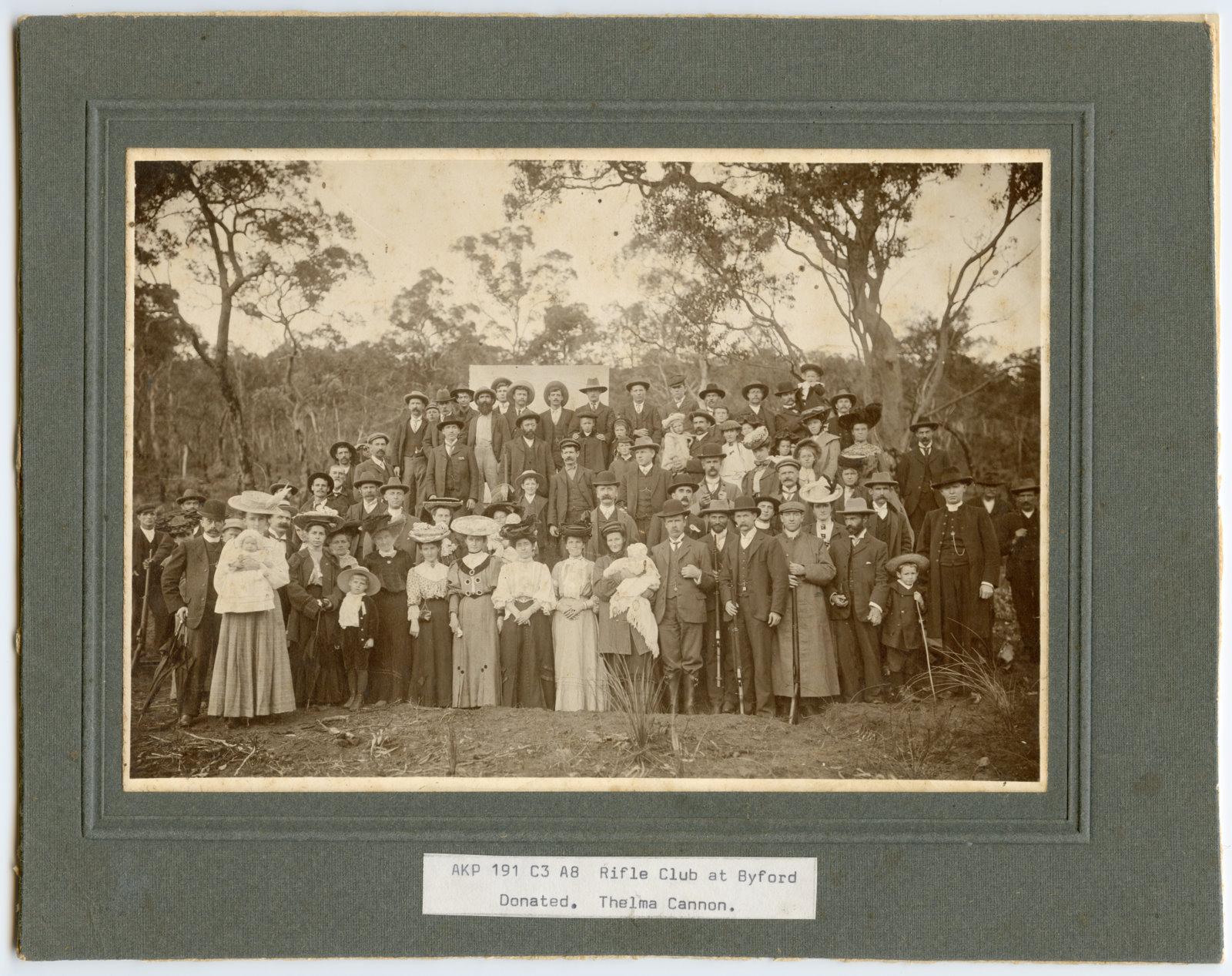
Armadale Rifle Club members at the Byford Range, c1907
In the early 1900s rifle clubs were formed across Western Australia, many replacing the colonial era Volunteer Corps. In 1906 the Armadale Rifle Club established its club rooms and range near Byford. Many dignitaries were invited to the opening of the club, and Mrs Roberta Jull was given the honour of firing the first shot on the new range. Newspapers reported that Mrs Jull ‘shouldered the rifle in a businesslike manner, and the marker registered a bull’s-eye amidst loud cheers.’
Courtesy Birtwistle Local Studies Library (FPH108)
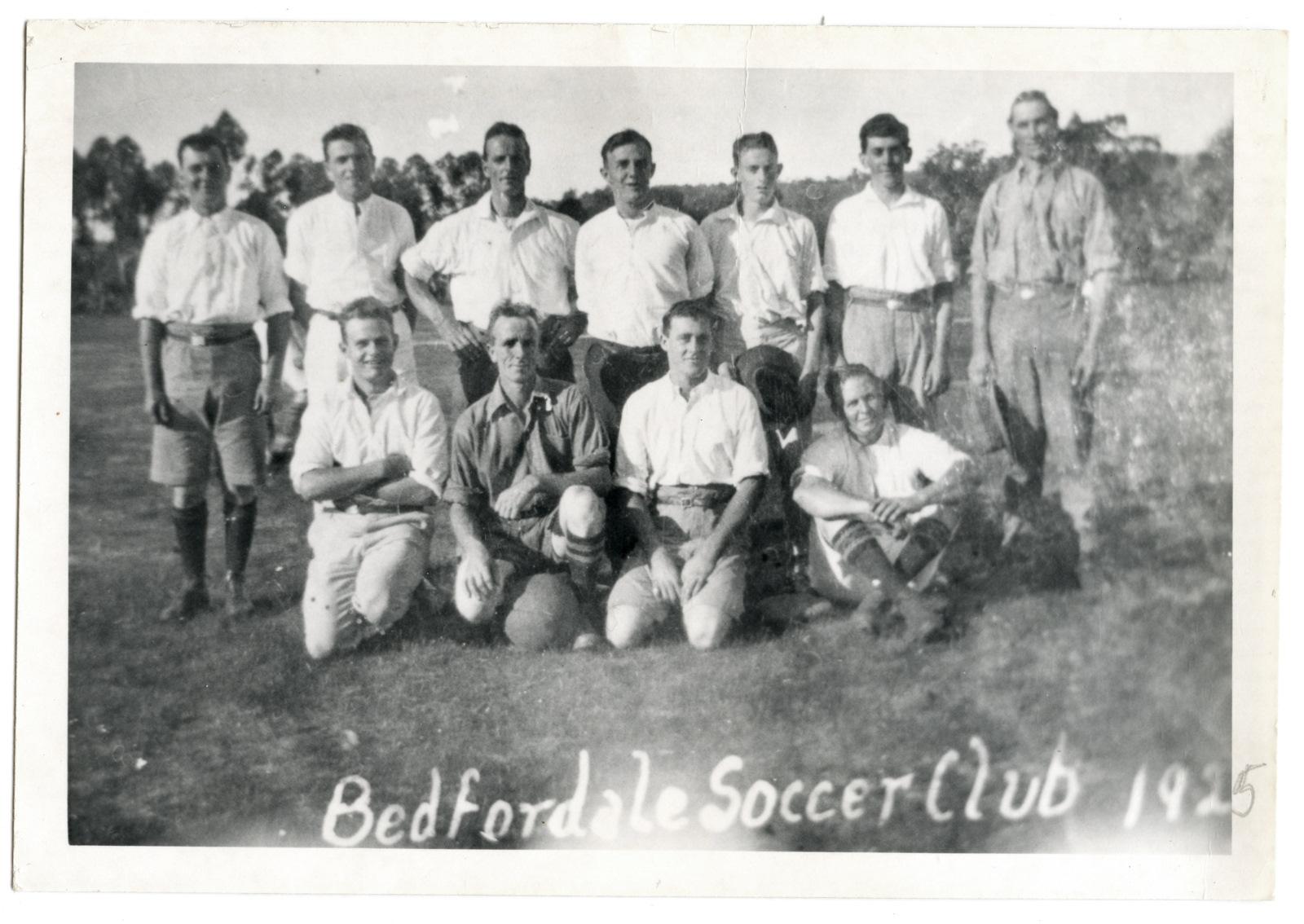
Bedfordale Soccer Club, 1925
Like tennis and golf, soccer took off in the district in the 1920s when there were enough interested players to form clubs in Bedfordale and Armadale.
Courtesy Birtwistle Local Studies Library (PH21)
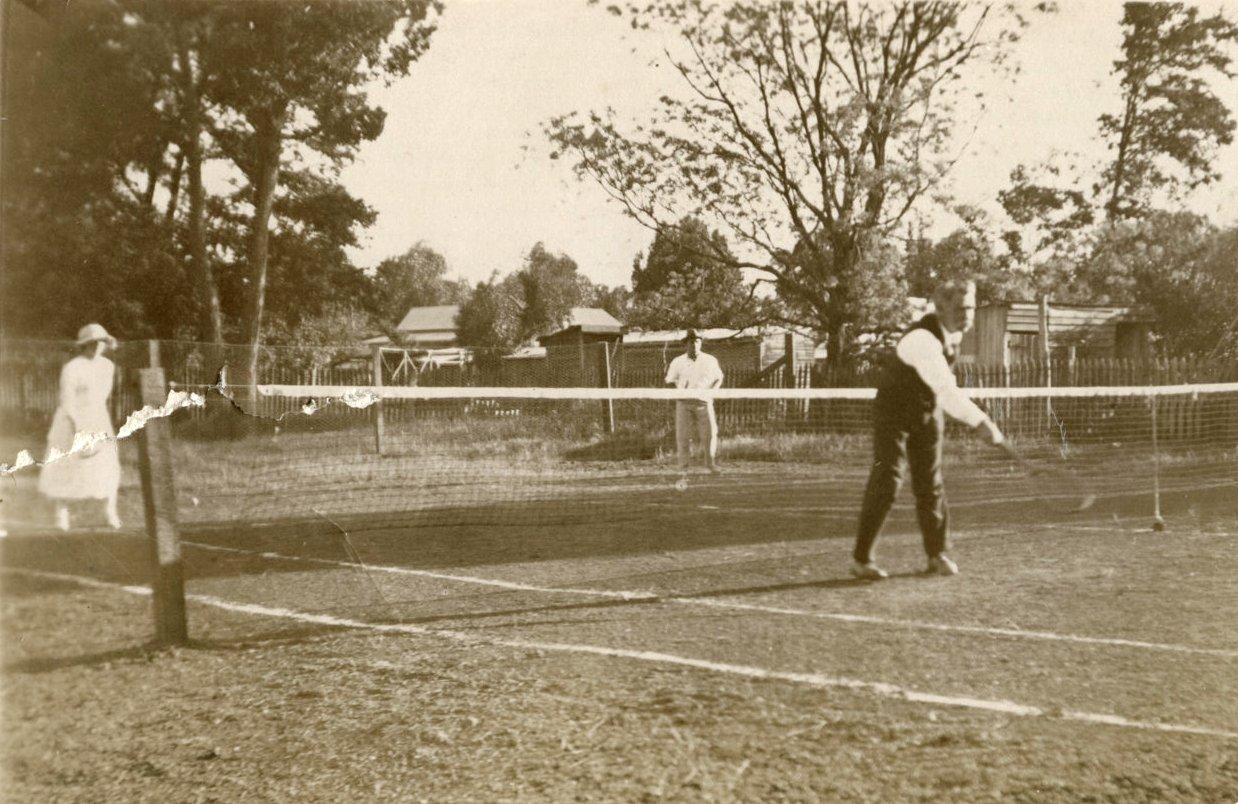
Tennis match being played at the opening of the Armadale Tennis Club, 1925
The original Armadale tennis courts were located near Soldiers Memorial Park on Jull Street. Soon both public and private courts were built in Kelmscott, Westfield, Bedfordale, Byford and Roleystone. In the mid-1970s the Armadale Tennis Club moved to Gwynne Park. The courts at Memorial Park operated as public courts through to the early 1980s, before being removed to make way for park land.
The game of tennis arrived in Western Australia in the early 1890s and, because it was considered a ‘game’, it was one of the few sports played by both men and women. It grew in popularity because you didn’t need a lot of room compared to cricket or football; you only needed two people, a net, a tennis ball, and a couple of racquets.
Courtesy Birtwistle Local Studies Library (PH484)
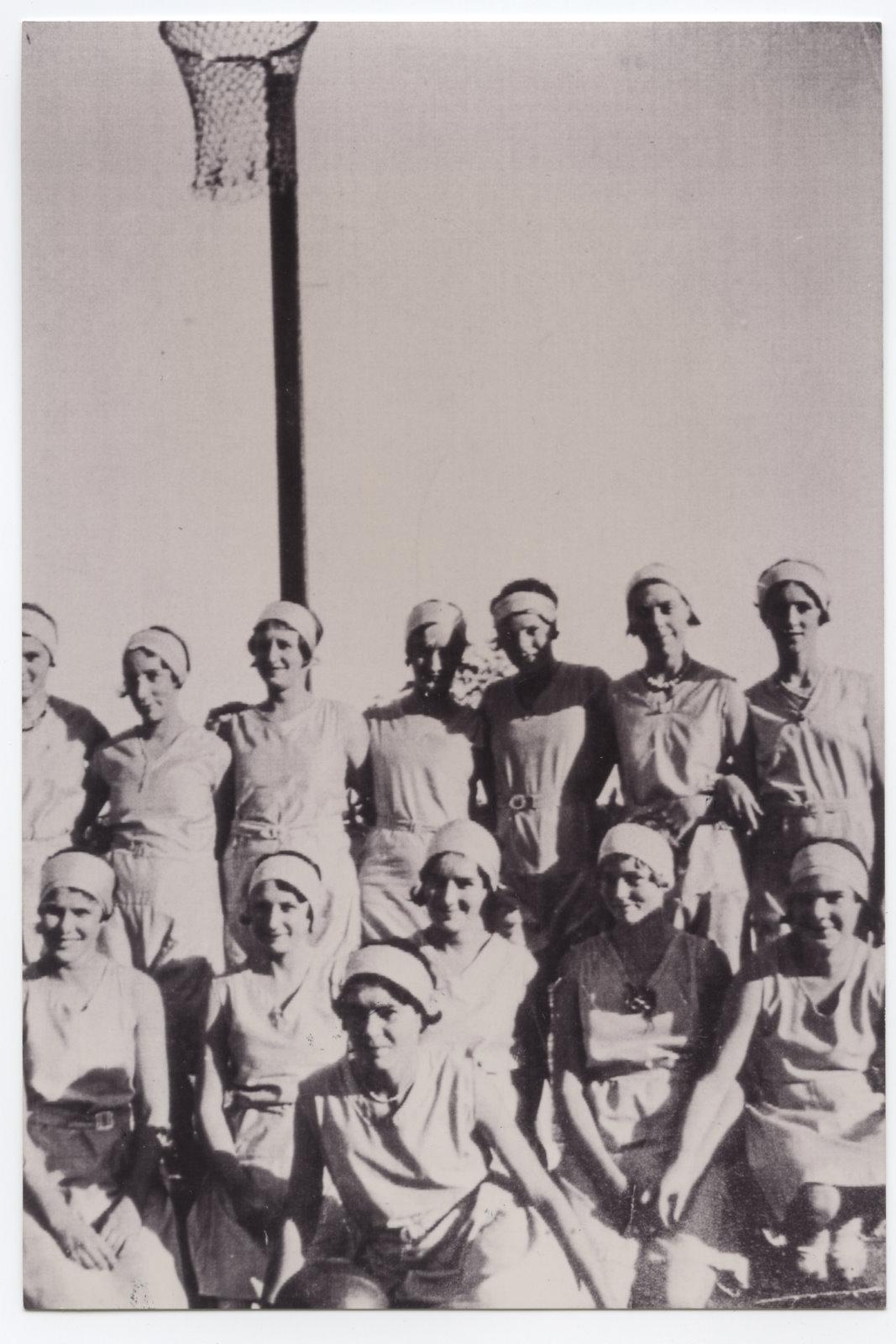
Armadale girls’ basketball (netball) team, 1929
In the 1890s at the Dartmouth Physical Training College and Gymnasium for Women the game of netball was created by modifying the recently invented game of basketball. In Western Australia by the 1920s the game was a part of most schools’ sporting curriculum. Because men did not play the game, and there was ‘no physical contact’, society at this time saw netball as being socially acceptable for women to play.
Locally the game has been very popular within the school system. In the 1970s community netball clubs such as the Roleystone Netball Club were formed, providing opportunities for players of any age to join a team.
Courtesy Birtwistle Local Studies Library (PH674)
Armadale Sporting Club commemorative medal, 1994
This medal was struck and presented to Roland ‘Roly’ Richardson to commemorate the inauguration of the Armadale Sporting Club, the 85th anniversary of the Armadale Football Club, and the 80th anniversary of the Armadale Cricket Club. All three clubs are located at Gwynne Park in Armadale.
Donated by R. Richardson
Bicycle tyre puncture repair kit, owned by Ricky Devereux, 1930s
Ricky grew up in Armadale and got his first bike aged 12 so he could deliver newspapers to homes around Armadale. A few years later Ricky joined the Armadale Amateur Cycling Club which held weekly time-handicapped road races. Ricky’s father Gordon volunteered at the club for many years even after Ricky left Armadale to join the Australian Navy in 1938. Ricky died aboard HMAS Sydney II, which was sunk during a naval battle of the Western Australian coast on 19 November 1941.
Donated by J. Kramer
Byford Tennis Club Annual ‘Swing into Spring Ball’ program and dance card, 20 September 1947
The social side of sporting clubs can almost be as important as the playing side. Many clubs have a social side from sharing a drink and a chat after a match, gathering for an awards night, or attending fundraising events such as a ball.
Donated by R. Richings
Armadale District Bowls Club pairs bowling championship trophy awarded to G. Devereux and J. Tower, 1957
Armadale Women’s Bowls Club life membership badge, 1976
Gordon and Ellie Devereux were founding members of the Armadale District Bowls Club, Gordon for the Men’s club in 1949 and Ellie for the Women’s club in 1954. Not only were both players, but they also volunteered their time to serve on the clubs various committees. Gordon played bowls into the late 1960s and Ellie played into the early 1980s. Ellie received life membership of the Armadale District Bowls Club in 1976.
The Armadale Bowls Club originally met and played at the refurbished croquet court next to Memorial Park on Jull Street in Armadale. In 1956 the club moved to the recently refurbished Gwynne Park where they are still playing today.
Donated by J. Kramer
Armadale Football Club Premiership hat band, 1923
This hat band belonged to popular football player and community member Claude Marsh. In the same year Claude won the club’s ‘most popular footballer’ competition by raising over £40 for charity. Claude had a long association with the club as a player and as a supporter. He helped to organise many social events, raising money for the club or for an important community cause.
Donated by C. Marsh
Post War Sporting Boom
The decades following the end of World War II saw considerable change occur in the City of Armadale. The district experienced its first urban boom with farm land turned into housing. At the same time an interest in new sports took off thanks to a variety of factors including a large influx of migrants from Britain and Eastern Europe, the introduction of television, and the hosting of the 1956 Olympic Games in Melbourne and the 1962 Empire (Commonwealth) Games in Perth.
With the growth of suburbia came pressure on the district’s small number of recreation grounds. Sports including hockey, baseball, netball, gymnastics, softball, squash, badminton, competition swimming, Rugby Union, and soccer all took off. Soccer in particular grew from a fringe sport into one that was demanding more recreational space to cater for the boom in senior and junior teams.
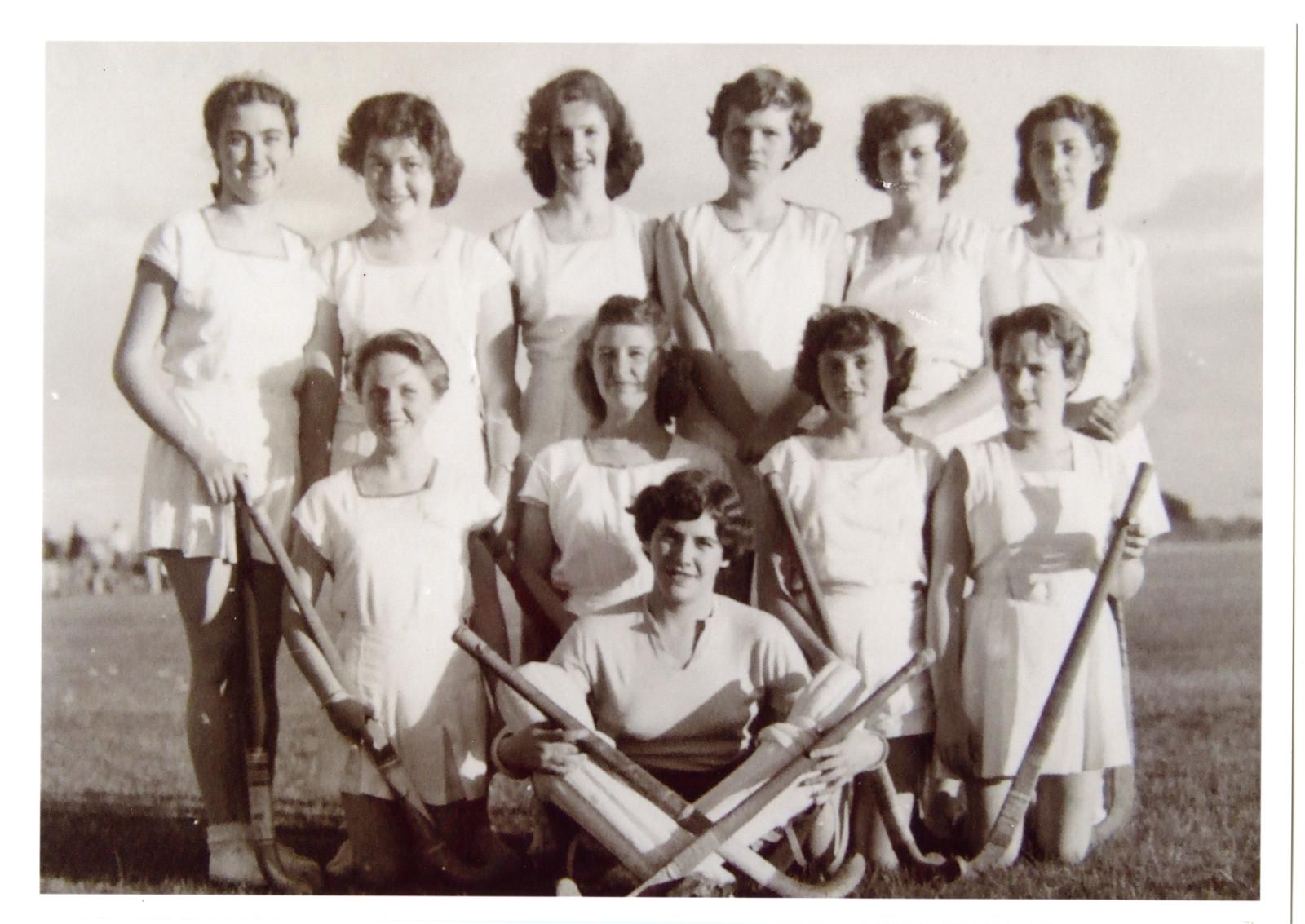
Kelmscott Women’s hockey team, 1954
The Kelmscott Women’s Hockey Club was formed in August 1951 at the home of the Rose family on River Road. The club had enough interest that they were able to field two teams the following year. Kelmscott A was very competitive, winning the grand final of their division.
Courtesy Birtwistle Local Studies Library (FPH299)
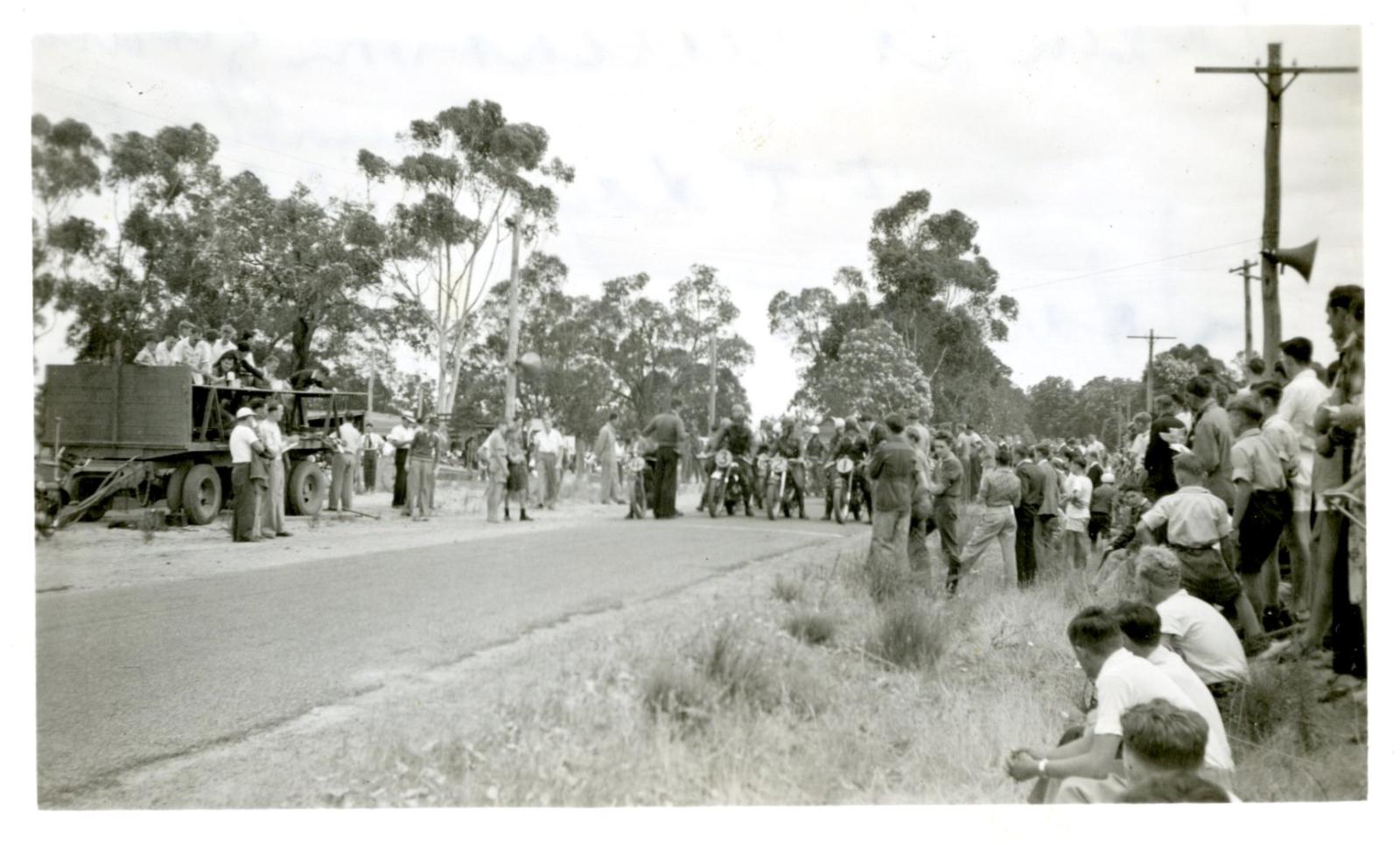
Tourist Trophy Motorcycle Race, 1950
This event was held only once in Armadale and attracted 3000 spectators. The street race track was a little over 4km long (2.5 miles) and started at Gwynne Park. This photo was taken by William Reid, a keen photographer and captain of the Armadale Football Club.
With the arrival of motor vehicles to Western Australia in the early 1900s it did not take long before clubs were formed and races organised. The Armadale Motor Cycle Club was formed in the 1920s. Numerous motor car and motor bikes races have been held in or passed through the district, from hill climbs to time trials.
Courtesy Birtwistle Local Studies Library (CDi38)
Lake Jandakot Sailing Club opening day, 29 September 1958
Members enjoying the club’s first official sailing event on Lake Jandakot.
Sailing was restricted to the northern part of the lake to reduce its impact on the many birds that nested there. The season was also dependent on how much rain the region received as during summer most of the lake dried up. The club operated until the early 1960s, when after two seasons being cancelled because of not enough water in the lake, the club folded.
Courtesy Birtwistle Local Studies Library (PH1315)
Members of the Lambert and Salter families enjoying the Kelmscott Pool on Christmas day, 1957
Swimming in the Canning River or local lakes had been a popular pastime for thousands of years. Roleystone Pool was a popular swimming hole in the Canning River. Locals would flock to it in summer for relief from the heat. The pool also saw the formation of the Roleystone Swimming Club in the late 1920s and also hosted swimming lessons and swimming carnivals.
In 1954 the Kelmscott community began advocating for a new enclosed pool, the nearing 1956 Melbourne Olympics may have helped inspire the push. Shortages of materials and skilled tradespeople saw the project suffer delay after delay. The drowning of Robert Spencer in the river near Kelmscott in January 1957 caused considerable outrage over the safety of swimming in the river and in less than 12 months the new Kelmscott Olympic Swimming Pool was opened.
Around the same time as the pool was opened the Kelmscott Amateur Swimming Club was formed. The club steadily grew and is today the Armadale Kelmscott Swimming Club located at the Armadale Fitness and Aquatic Centre, where it holds its training sessions and club competition nights.
Courtesy Birtwistle Local Studies Library (PH1301)

Kelmscott BMX track, c1985
Racers (l-r) Anthony Ronsen, Clive Reed, Mark Nekrews, Boban Erakovic and Andrew Morrison competing at the Kelmscott track.
Courtesy Birtwistle Local Studies Library (CDi211)
Kips. Gymnastic Most Improved trophy, 1982
This trophy was presented to Fiona Clay who attended Kips Gym which was started by Rod and Julie Sinclair, former gymnasts and teachers at Kelmscott Senior High School. The gym started at the school before moving to an industrial unit on Champion Drive.
Gymnastics for many years was a part of school sports. In the 1970s and 80s it became available outside of schools through private operators like Kips and the Armadale Police and Citizens Youth Clubs.
Donated by F. Clay
Armadale Water Walkers sponsorship sign, c2003-2017
The over-55 Armadale Water Walkers were formed in 2003 at the Armadale Aquatic Centre. The club encouraged people to join them for regular low impact exercise followed by a chat over a cuppa. The club would regularly hold special challenges including walking the distance of the ‘Swim to Rottnest’ event (80 laps of the pool) or ‘Walking to Broome’.
Collected by COA
Kelmscott BMX track street sign c2001-2014
BMX (Bicycle Motocross) racing started in America during the 1970s. In the early 1980s the sport seemed to explode in popularity around the world, including Kelmscott. The Kelmscott BMX track was built by the Kelmscott Bicycle Motocross (BMX) Club in 1981 at the back of John Dunn Memorial Park on Third Avenue. Within a year the club was one of the largest BMX clubs in Western Australia with over 200 children regularly racing.
Over time the popularity of BMX racing began to fade. By 2008 the track was falling into disrepair and in 2014 was bulldozed. Though the track was gone the love of BMX racing had not disappeared. In 2008 BMX racing became an Olympic Sport with BMX freestyle added in 2020. Both of these helped to raise the profile of the sport.
In 2022 the Kelmscott track was restored by the City of Armadale and upgraded into a modern bike park with tracks and jumps for beginners through to extreme BMX riders as well as a mountain bike track around the outside.
Acquired by the City of Armadale
Where do we play?
In the late 1800s, cricket and a variety of footballs were played on a private ground near the Narrogin Inn. In 1901 a deputation, supported by the Armadale Kelmscott Road board (AKRB), requested £100 pounds from the State Government to purchase 40 acres of land for a recreation ground. Two years later the AKRB purchase land near the Armadale Institute Hall on Jull Street. The ground though didn’t satisfy the community’s needs, and in 1908 land was purchased along Seventh Road for a new recreation ground that in 1959 was named Gwynne Park.
In the early 1900s public recreation grounds were also established in Bedfordale and Roleystone. For many years these grounds, along with private grounds in Kelmscott, Roleystone, and Byford satisfied demand. This changed when the district underwent the post-World War II population boom.
In the 1950s public recreation grounds were established in Roleystone and Forrestfield, a public pool in Kelmscott, and the Armadale Recreation Ground received a much needed upgrade with new change rooms and grandstand built, along with tennis courts and a lawn bowls court. The 1970s and early 1980s saw Morgan Park, John Dunn Oval. Creyk Park, the Armadale Arena, and the Armadale Aquatic Centre all open.
For the last 15 years the City of Armadale has been experiencing a new suburban boom with suburbs being established in the western part of the City. As new residents arrived so did the desire for recreation facilities. Since 2014 the City has opened Piara Waters Pavilion, Harrisdale Pavilion, Rossiter Pavilion, and Novelli Pavilion, as well as undertaking a major redevelopment of the Armadale Aquatic Centre.
Today the City manages over 160 hectares of recreation grounds and 19 facilities that host sporting clubs.
Plaque commemorating the opening of the Armadale Aquatic Centre, 20 December 1980
In 1957 the City of Armadale constructed its first public pool on the banks of the Canning River in Kelmscott. By the late 1970s the community had grown too big for this facility so the far larger Armadale Aquatic Centre was opened on Champion Drive in Westfield. This facility featured multiple pools and the very popular Armadale Aquatic Slides.
By the 2010s it was clear that this facility was no longer meeting the needs of the community so the Armadale Aquatic Centre was closed, demolished and the Armadale Fitness and Aquatic Centre was constructed and opened in 2019. This new facility featured both indoor and outdoor pools, a gym, fitness classes and a sauna.
The provision of an affordable public pools, especially when located some distance from the beach is an important council service. It provides a home for clubs such as the Armadale Walker Walkers and the Armadale Kelmscott Dragons Swimming Club, which formed in 1957, it also provide a venue to teach both children and adults the fun and lifesaving skill of swimming.
Donated by the City of Armadale
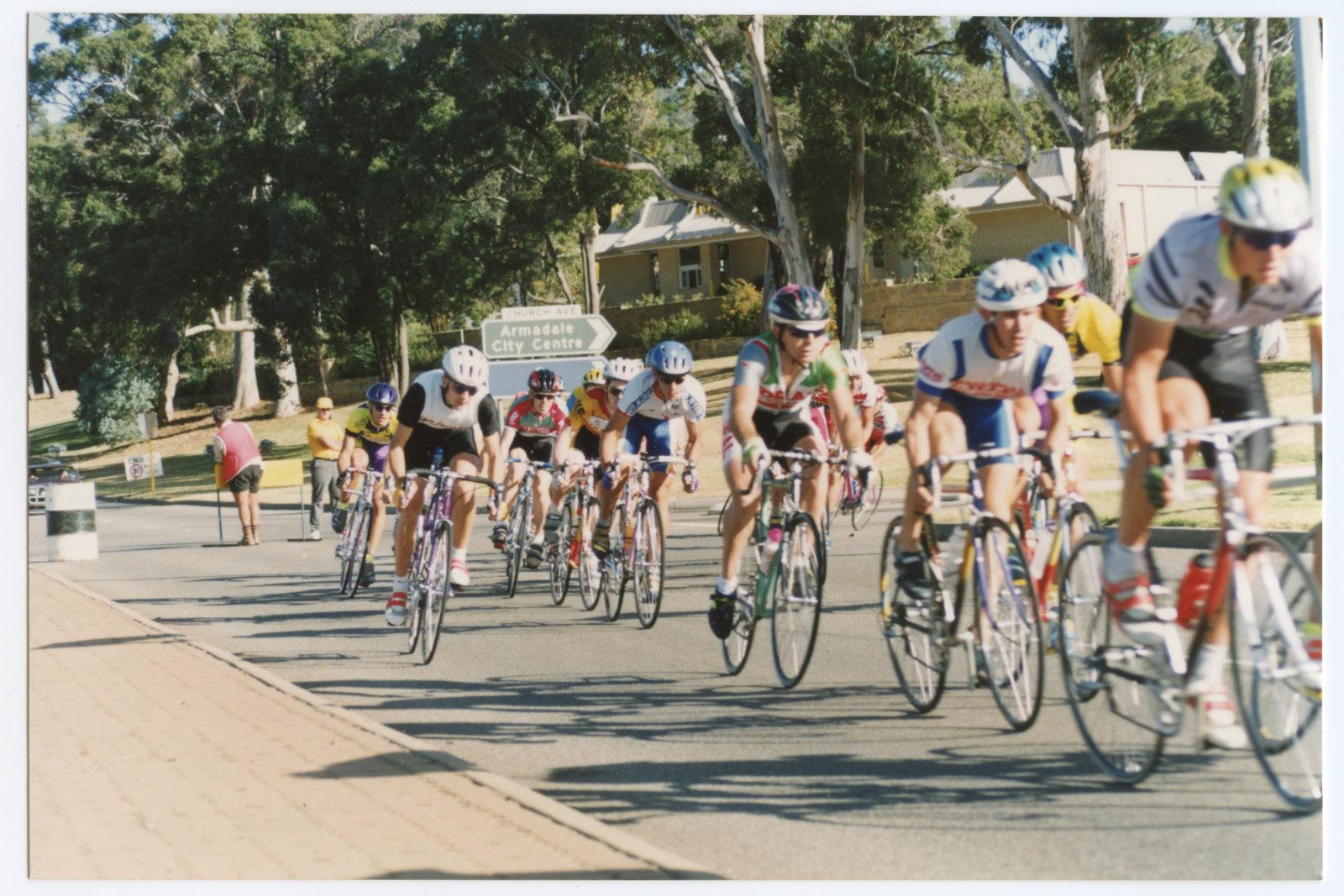
Riders participating in the Armadale Cycling Classic c2000
This race was organised by the Southern Districts Cycle Club and was held in conjunction with the City of Armadale’s Highland Gathering a Scottish themed community event. The race started in the early 1990s and became a part of the Highland Gathering between 1997 and 2012.
Courtesy Birtwistle Local Studies Library (PH143)
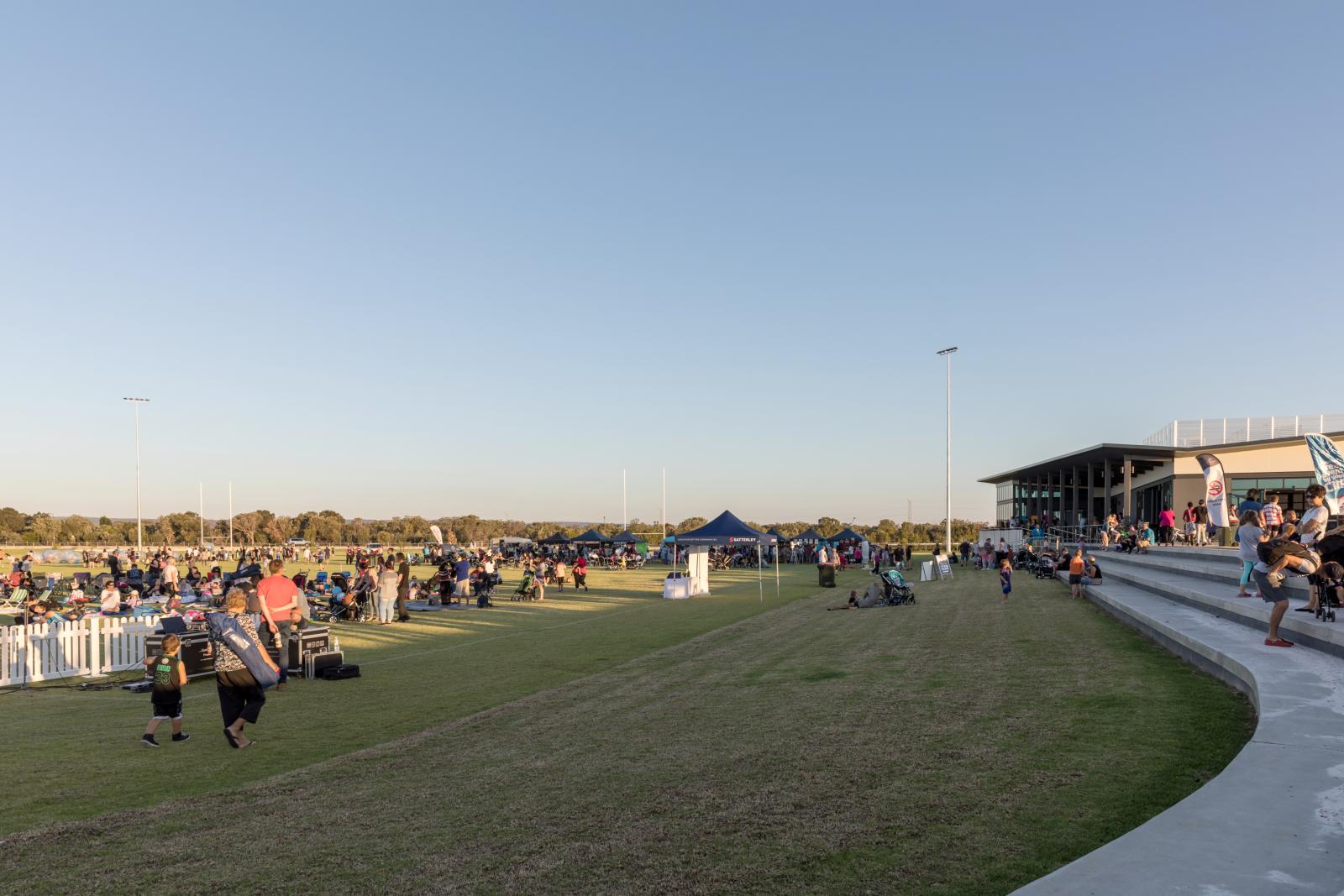
Opening day at Harrisdale Pavilion and Playing Fields, 25 March 2017
Courtesy City of Armadale
Commemorative medal for first national rowing regatta at Champion Lakes Regatta Centre, June 2010
Champion Lakes is a $300 million international standard facility constructed in the early 2000s by expanding a small natural lake into a 2,000 metre course. The facility covers 55 hectares and includes facilities for rowing sports, parkland, barbeque facilities, cycling and walking trails, and a public swimming area.
The first international event held at the facility was the Australian Masters Rowing Championships. Local elder Albert McNamara conducted a Welcome to Country and was presented with this medal to commemorate the event. Today the facility is home to rowing, kayaking, triathlon, and dragon boat clubs, as well as a Parkrun group.
Donated by A. McNamara
John Dunn Challenge Park, opened in 2022
Courtesy City of Armadale
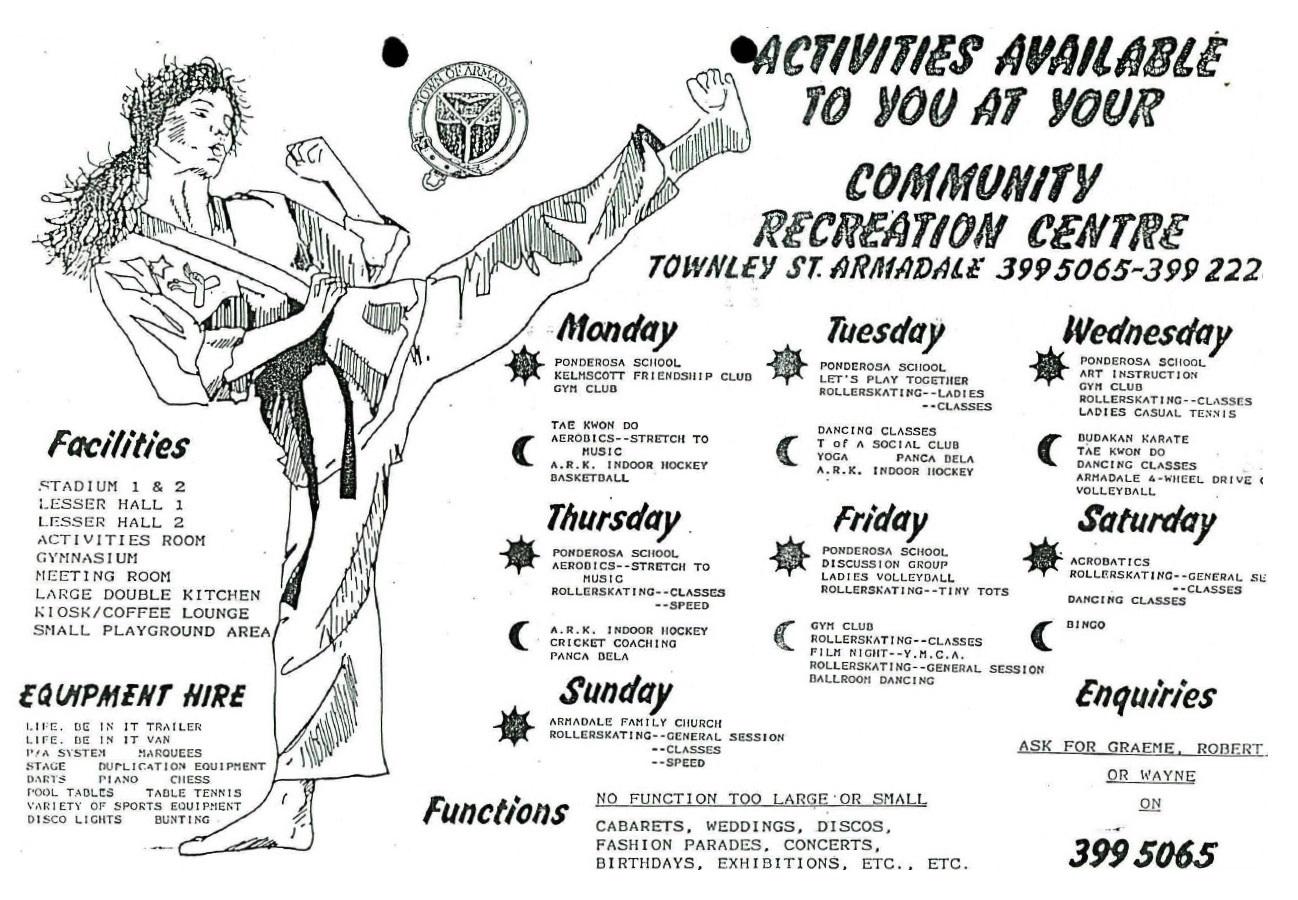
Activities flyer for the Armadale Community Recreation Centre, c1984
In 1985 the centre was leased and managed by the Australian Community Recreation Association. In 2003 the management of the centre was taken over by the Armadale Police and Citizens Youth Club before reverting back to the City of Armadale in 2008.
Courtesy Birtwistle Local Studies Library (CDi221)
Thank you plaque from Telstra Triathlon Series 2011/2012 to City of Armadale, 14 January 2012
Major events such as the Telstra Triathlon Series are open to amateur and professional racers. They also require hundreds of volunteers to make sure the event goes ahead. Many local residents, some with an interest in triathlon and others with none, donated their time to help organise and run the event. The City of Armadale assisted the event by closing roads to create the cycle race path, traffic management and supporting the event organisers.
Donated by the City of Armadale
Ignite Basketball top, c2012
Sport is played for fitness, to socialise, and can also be as a safe place and an avenue to help people move away from potentially harmful behaviour. In 2010 the Armadale Police and Citizens Youth Club and the City of Armadale developed the Midnight Basketball program to give local teens, 12-18 something to do on a Saturday night. In 2012 it was rebranded as Ignite Basketball.
The program was free and aimed at teens who were deemed at risk. The program provided a safe space, dinner, and the opportunity to play several games of basketball during the night. Participants could also sign up for workshops on developing their skills, learning how to be an umpire or a coach. The program was also designed to build a safe and trusting environment where children at risk could be identified and directed to appropriate services if needed.
Courtesy City of Armadale
Police and Community Youth Centre shirt, c2010
The Armadale Police and Community Youth Club (PCYC) was formed in April 1980 and operated out of the Champion Centre on Champion Drive. In 2003 the Armadale PCYC moved to the Armadale Arena, on Townley Street where it ran its programs until 2017 when the local PCYC was closed down.
The PCYC was established in 1937 by the Western Australian Police and Rotary as a way to give guidance and structure to boys through sport. Later the organisation developed diversionary programs for children who were on harmful pathways.
The organisation ran a variety of sporting activities, including basketball and gymnastics for children as a way to give them a productive way to use their leisure time and to 'develop different aspects of citizenship'.
Courtesy of the City of Armadale
City of Armadale Arena Assistant Manager polo-shirt, c2010
The Armadale Arena was opened by the City of Armadale in 1979 and was the City’s first large-scale indoor sports centre featuring marked out basketball, netball, and badminton courts. The centre has also been used for gymnastics, indoor hockey, roller hockey, martial arts as well as housing a gym. In 2011 it became the evacuation and later service and information centre for people impacted by the Roleystone Kelmscott Bushfire.
The centre was managed by a private organisation from 2003 to 2008 when the City took back the management of the centre.
Donated by the City of Armadale
